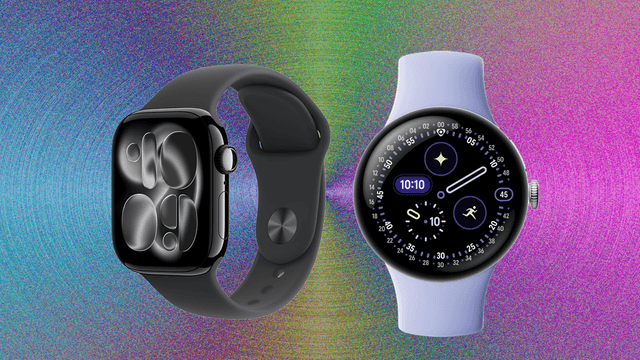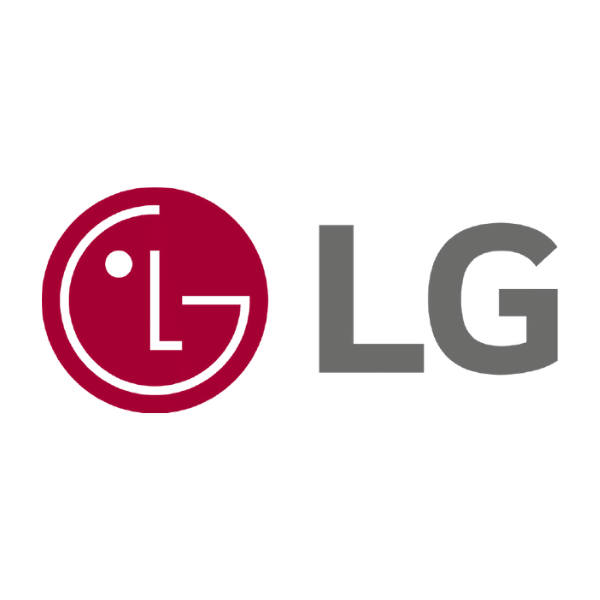The Best Over-the-Counter Hearing Aids
All products featured on WIRED are independently selected by our editors. However, we may receive compensation from retailers and/or from purchases of products through these links. Learn more.
Featured in this article
In 2022, the US Food and Drug Administration approved the sale of over-the-counter (OTC) hearing aids to supplement traditional prescription options, increasing accessibility and affordability for millions of Americans affected by untreated hearing loss. But how do OTC models measure up to prescription hearing aids? And more importantly, do budget OTC devices treat hearing loss well?
There’s been a healthy level of skepticism around these products since they first hit the shelves, both from medical professionals and long-time hearing aid users. After all, how can a nonprescription product serve the needs of every patient, considering that their hearing needs are invariably unique? And if there’s no doctor, who can you turn to for guidance when problems arise?
These are the kinds of questions I got to the bottom of, wearing dozens of OTC hearing aids personally for an extended period to gauge sound quality, ease of use, and overall comfort. I also put their bonus features—such as Bluetooth streaming capabilities—to the test in various real-world environments. Our top OTC hearing aid recommendation is the Jabra Enhance Select 300, but in this guide, you'll also find a general primer on hearing aids, diving into key differences between prescription and OTC models.
Updated August 2025: We've added the Jabra Enhance Select 500, Enhance Select 50R, JLab Hear, and Apple AirPods Pro 2. We've also reformatted this guide.
What Are Over-the-Counter Hearing Aids?
Over-the-counter, or OTC, hearing aids are any FDA-approved hearing assistance device you can purchase without a doctor’s prescription. Because they’re not custom-fitted like prescription devices, OTC hearing aids are marketed to patients with mild to moderate hearing loss.
While there are some key differences between over-the-counter and prescription hearing aids, all hearing aids work the same way. Namely, they use built-in microphones to pick up sounds in the user’s environment and send them back to the ear through a tiny speaker called an amplifier. These types of hearing aids are collectively referred to as “air-conduction” hearing aids, regardless of whether or not they require a prescription.
OTC vs. Prescription Hearing Aids
The main thing that sets OTC hearing aids apart from prescription devices is the need for a prescription. Similar to reading glasses or orthotics you might pick up from the local drugstore, OTC hearing aids offer a broad level of improvement, but they’re not necessarily the best choice for everyone. OTC hearing aids aren’t designed for severe to profound cases of hearing loss, or for patients under the age of 18.
Hearing care specialists conduct extensive auditory tests and physical examinations to tailor prescription devices to a patient’s unique level of hearing loss. By their very nature, OTC devices are unable to offer this level of custom care. Almost all of them are self-fitting, typically using an app-based or online test to give users a general idea of their hearing loss needs.
It’s important to note that online tests can be misleading, as there are multiple causes behind hearing loss, some of which don’t require the help of hearing aids. When it’s caused by an obstruction like wax buildup or the presence of a foreign object, hearing loss can quickly and easily be remedied by an in-person doctor’s visit. But you’d never know that just by taking an online test—which is why I recommend scheduling an appointment with an audiologist regardless of the type of hearing aid you choose.
If nothing else, OTC hearing aids are a great way to dip your toe into the proverbial pond of assistive hearing technology without having to foot the costly bill associated with most prescription models.
Where to Buy OTC Hearing Aids?
OTC hearing aids can be purchased online or offline directly from the manufacturer or major retailers like Walmart, Best Buy, Amazon, and other merchants that sell personal technology products. Should you buy directly from a manufacturer or a third-party retailer? You might find better prices from the latter, but a direct purchase provides benefits worth exploring before you type in your credit card information.
First is support: Companies like Jabra and LXE Hearing's Eargo (and others) offer direct access to their audiology teams. They can consult with you before you make a purchase, personally tune your hearing aids to your audiogram, and make adjustments over time. For most vendors, these services are free as part of your purchase and included with your warranty, which may span up to three years in length. While it’s not impossible to get this kind of service on a hearing aid you bought from a retail channel, it’s certainly more complicated—though many hearing aids sold via big box stores don’t offer a service plan at all.
Compare Top 6 Hearing Aids
| Hearing Aid | Price | Battery Type | Max Battery Life | Weight | Style | Availability |
|---|---|---|---|---|---|---|
| Best OTC Hearing Aid: Jabra Enhance Select 300 | From $1,695 | Rechargeable | 30 hours | 2.23 grams | BTE | OTC |
| Best Upgrade: Jabra Enhance Select 500 | From $1,995 | Rechargeable | 30 hours | 2.12 grams | BTE | OTC |
| Best Value: Jabra Enhance Select 50R | From $1,195 | Rechargeable | 24 hours | 2.5 grams | BTE | OTC |
| Best Invisible Fit: Sony CRE-C20 | From $998 | Rechargeable | 28 hours | 1.5 grams | ITE | OTC |
| Best Ultra-Low-Cost Hearing Aids: JLab Hear | From $100 | Rechargeable | 10 hours | 5.2 grams | ITE | OTC |
| Try This First: Apple AirPods Pro 2 | From $249 | Rechargeable | 6 hours | 5.3 grams | ITE | OTC |
Other Hearing Aids to Consider
We've reviewed dozens of hearing aids, and many of them are good but not perfect. Here are alternatives to consider:
Eargo Link for $699: Eargo’s Link (7/10, WIRED Recommends) is the company’s entry-level offering, and while it strips out several features (such as a mobile app), it’s still worth considering if you like Eargo’s design aesthetic. The earbud-like design looks great, too.
Sony CRE-E10 for $898: The CRE-E10 (7/10, WIRED Review) hearing aids are a wholly different type of product than Sony’s CRE-C20, featuring a bigger, chunkier, earbud-like look. I didn’t like the audio experience quite as much as the C20, but they’re still top-notch aids at a fairly low price.
Avoid These Hearing Aids
While these OTC models have some desirable features and low prices, they didn’t measure up when we put them to the test.
MDHearing’s Neo and Neo XS are low-cost hearing aids that, unfortunately, don’t provide an effective amount of support, are uncomfortable, and offer a very hospital-like appearance. Both can be safely passed over.
At just $98 per pair, the Audien Atom One (5/10, WIRED Review) is the cheapest FDA-approved OTC hearing aid we’ve seen. Alas, you get what you pay for. All settings come with heavy levels of background hiss. There’s no smartphone app, no Bluetooth compatibility, and pretty much nothing else to recommend them. The $289 Atom Pro 2 is an improvement, but still a very basic product.
What to Look for in an OTC Hearing Aid
If you’re spending hundreds or thousands of dollars buying an OTC hearing aid, make sure you’re getting a product that offers a sustainable long-term solution to your hearing loss needs. Aside from the obvious things like sound quality, take a few minutes to look into these specs.
What size and style works best for you? Most hearing aids on the market are classified as either behind-the-ear (BTE) or in-the-ear (ITE). BTE hearing aids are probably what you think of when you picture a hearing aid, consisting of a plastic case that contains the electronics, a thin cable that goes over the ear and inside the canal, and a tiny speaker known as a “receiver,” which sends boosted audio from a person's surroundings into their ear. By contrast, ITE models are self-contained units that look like a standard pair of wireless earbuds. In-the-ear hearing aids are popular for their incognito aesthetic, and they tend to be a lot easier to pop in and out than their behind-the-ear counterparts. Still, contemporary BTE hearing aids are significantly smaller than the ones “back in the day.” It just comes down to what fits you most comfortably.
Replaceable or rechargeable batteries? Much like wireless earbuds, most OTC hearing aids are equipped with rechargeable batteries and (usually) a portable charging case for easy transport. If you take the case’s battery life into account, you’ll find most OTC models last about a week before you need to connect to a power source. Without the case, rechargeable hearing aids offer anywhere from 10 to 24 hours of battery life per charge (but this goes down by a few hours if you’re using them to stream via Bluetooth). Replaceable batteries, such as those found on the Sony CRE-C10, can last for 70 hours or more before the battery dies. Sounds great, but it means having spares on hand and wrestling with tiny cells, which can be difficult for people with dexterity problems.
Are you comfortable making adjustments? While prescription hearing aids are fitted in-office by a licensed hearing care specialist, OTC devices are self-fitting. In most cases, OTC hearing aid users are expected to be able to tune the devices to their ears, usually with the help of a smartphone app. It’s certainly nice to make your own adjustments on the fly, but it may cost you in the way of personalized care.
What’s the company’s customer support like? If only you could count on quality support from every hearing aid manufacturer! Unfortunately, OTC hearing aid companies are just that—companies. There’s no “standard” for customer service in the industry. Companies like Jabra offer patients comprehensive support, but other brands may leave you on your own.
Is there a trial run? If you’re not happy with your hearing aids, you’ll probably want to have the option to return them without writing all that money off as a sunk cost. Most states require manufacturers to provide patients with a minimum trial period, but I recommend playing it safe by seeking out this info before buying.
What about warranties? Equally important to a reasonable trial period is the inclusion of a comprehensive manufacturer’s warranty. Most brands cover manufacturing defects for up to a year, but it goes without saying that the longer the coverage period, the better the deal. No matter which OTC hearing aid you end up with, make sure the warranty covers loss, damage, and wear and tear.
How Much Do OTC Hearing Aids Cost?
The average pair of OTC hearing aids will usually run you around $800 to $2,000 for a quality pair, and sometimes significantly less. The US government notes that OTC hearing aid options save the average consumer $3,000 compared to prescription products.
Financing options: Many hearing aid manufacturers offer monthly financing plans or subscription models where users can lease aids instead of purchasing them outright. These packages often include benefits like maintenance, support, accessories, loss and damage protection, software updates, and regular hardware upgrades. This may save money upfront while also guaranteeing you have the latest tech on the market.
Does insurance cover OTC hearing aids? Usually not. It’s extremely rare for a provider to cover the cost of the devices themselves. Most providers only offer hearing benefits with the purchase of a supplemental insurance plan, available to members for an additional monthly premium. Even federal programs like Medicaid don't cover hearing aids unless you pay extra for Medicare Advantage Plans. Terms for hearing aid coverage through Medicaid for low-income individuals greatly vary from state to state. Check out this list from the Hearing Loss Association of America to see what each state’s Medicaid program covers.
What Kinds of OTC Hearing Aids Are There?
A wide range of hearing aid brands are now available over the counter. Many of these are marketed by consumer electronics and audio companies that have expanded into the hearing aid market, often by either partnering with an established hearing aid company or by acquiring one outright. Some of the biggest OTC hearing aid companies today include LXE, Jabra, Audicus, and Sony.
The FDA ruling that created the OTC hearing aid market applies to a category of hearing aids called air-conduction aids, which means they amplify sound waves piped through the open air, much like a traditional headphone or earbud. Other types of hearing aids—including those based on bone conduction technology—are not covered by the new OTC regulations and are available only as prescription devices. Air-conduction hearing aids are available in a range of styles and designs, including traditional behind-the-ear (BTE) formats and units that sit in the ear (ITE) directly.
PSAPs vs. OTC Hearing Aids
PSAPs, or personal sound amplifying products, may look like hearing aids, but they are a different class of product. Fundamentally, PSAPs are not designed for users with impaired hearing: They are amplifiers that can improve audio quality by making softer sounds louder and easier to hear (ideally without amplifying sounds that are already loud). Historically they have been used in fields like hunting and birdwatching, where the slightest noise can be an indication of activity that should attract the wearer’s attention.
PSAPs are not medical devices and are not approved by the FDA, and the agency officially states they “are not alternatives to hearing aids.” But in recent years the line between low-end hearing aids and PSAPs has blurred considerably, and many PSAPs are quite effective. Some, like JLab’s Hear, have even adopted the “hearing aid” moniker as part of the product name. If you have mild hearing loss, a PSAP may be just as good as a hearing aid—and it’s likely to save you a considerable amount of money—so they’re worth testing for personal effectiveness if you can try them out in person.
Power up with unlimited access to WIRED. Get best-in-class reporting and exclusive subscriber content that's too important to ignore. Subscribe Today.

-SOURCE-Chris-Null.jpg)
.png)
-SOURCE-Christopher-Null.jpg)





















